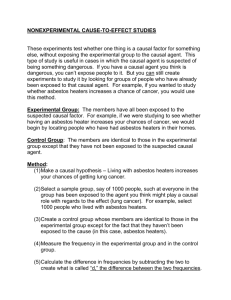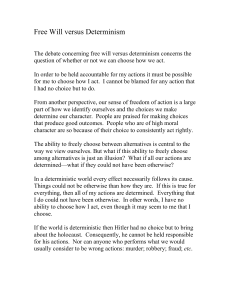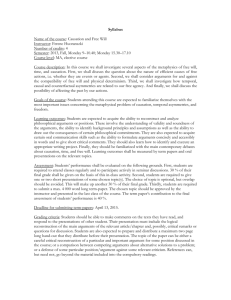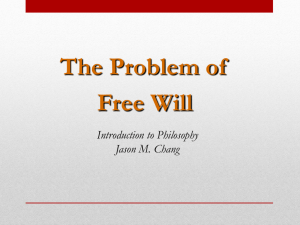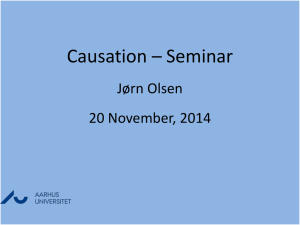Determinism denies the premise of homogeneity of causal parameters
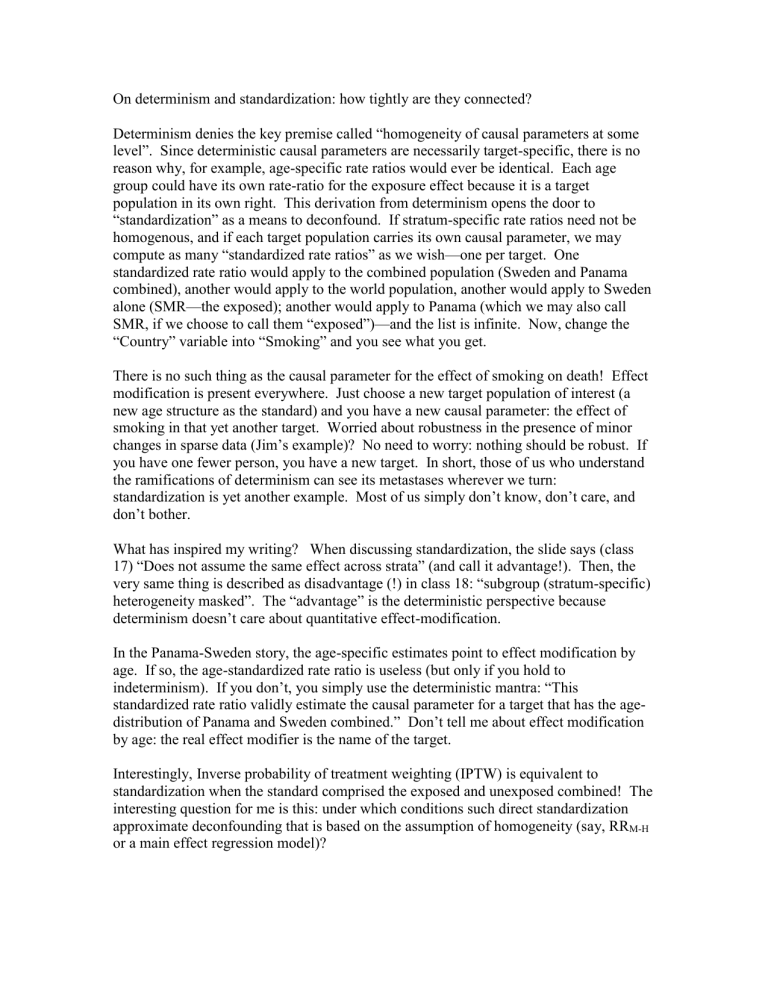
On determinism and standardization: how tightly are they connected?
Determinism denies the key premise called “homogeneity of causal parameters at some level”. Since deterministic causal parameters are necessarily target-specific, there is no reason why, for example, age-specific rate ratios would ever be identical. Each age group could have its own rate-ratio for the exposure effect because it is a target population in its own right. This derivation from determinism opens the door to
“standardization” as a means to deconfound. If stratum-specific rate ratios need not be homogenous, and if each target population carries its own causal parameter, we may compute as many “standardized rate ratios” as we wish—one per target. One standardized rate ratio would apply to the combined population (Sweden and Panama combined), another would apply to the world population, another would apply to Sweden alone (SMR—the exposed); another would apply to Panama (which we may also call
SMR, if we choose to call them “exposed”)—and the list is infinite. Now, change the
“Country” variable into “Smoking” and you see what you get.
There is no such thing as the causal parameter for the effect of smoking on death! Effect modification is present everywhere. Just choose a new target population of interest (a new age structure as the standard) and you have a new causal parameter: the effect of smoking in that yet another target. Worried about robustness in the presence of minor changes in sparse data (Jim’s example)? No need to worry: nothing should be robust. If you have one fewer person, you have a new target. In short, those of us who understand the ramifications of determinism can see its metastases wherever we turn: standardization is yet another example. Most of us simply don’t know, don’t care, and don’t bother.
What has inspired my writing? When discussing standardization, the slide says (class
17) “Does not assume the same effect across strata” (and call it advantage!). Then, the very same thing is described as disadvantage (!) in class 18: “subgroup (stratum-specific) heterogeneity masked”. The “advantage” is the deterministic perspective because determinism doesn’t care about quantitative effect-modification.
In the Panama-Sweden story, the age-specific estimates point to effect modification by age. If so, the age-standardized rate ratio is useless (but only if you hold to indeterminism). If you don’t, you simply use the deterministic mantra: “This standardized rate ratio validly estimate the causal parameter for a target that has the agedistribution of Panama and Sweden combined.” Don’t tell me about effect modification by age: the real effect modifier is the name of the target.
Interestingly, Inverse probability of treatment weighting (IPTW) is equivalent to standardization when the standard comprised the exposed and unexposed combined! The interesting question for me is this: under which conditions such direct standardization approximate deconfounding that is based on the assumption of homogeneity (say, RR
M-H or a main effect regression model)?
In a 1994 paper, Greenland (and his student Maldonado) has turned the story of standardized rate ratio versus RR
M-H
upside down. The paper is not easy reading, but it says the following: The assumption of a homogenous RR is nonsense. Therefore, RR
M-H
(or its equivalent from a main effect regression model) has no meaning as an estimate of the common RR (there is no common RR!). We therefore should look for an alternative interpretation of RR
M-H
(and its cousins in regression). We should find out when RR
M-H approximates RR
STANDARDIZED
. His math leads to the conclusion that RR
M-H
should estimate the RR
STANDARDIZED
when the weights of the standard come from the total population (exposed and unexposed).
So, we conclude: RR
M-H
= (RR
IPTW
= RR
STANDARDIZED
) (when the study population serve as the standard!). From my point of view, only one kind of RR
STANDARDIZED
is valid: That which approximates RR
M-H
. But they don’t always agree, especially when the data in some strata are sparse.



